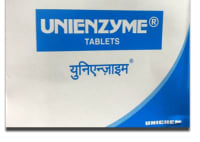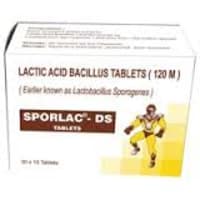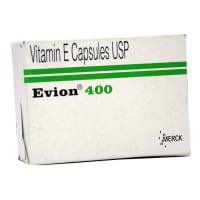USED FOR:
Bacterial infections
COMPOSITION:
Chloramphenicol (0.5% w/v)
Sulphacetamide / Sulfacetamide (20% w/v)
Therapeutic Uses:
otologicals
ophthal otologicals

No interaction found

WEIGH RISKS VS BENEFITS
Chloromide Eye Drop may be unsafe to use during pregnancy.Animal studies have shown adverse effects on the foetus, however, there are limited human studies. The benefits from use in pregnant women may be acceptable despite the risk. Please consult your doctor.

No information is available on the use of Chloromide Eye Drop during lactation. Please consult your doctor.

Chloromide Eye Drop may cause blurring of your vision for a short time just after its use. Do not drive until your vision is clear.

Chloromide Eye Drop is probably safe to use in patients with kidney disease. Limited data available suggests that dose adjustment of Chloromide Eye Drop may not be needed in these patients. Please consult your doctor.

There is limited information available on the use of Chloromide Eye Drop in patients with liver disease. Please consult your doctor.
Uses of Chloramphenicol
Chloramphenicol is used in the treatment of bacterial infectionsIt is used to treat certain types of serious infections caused by bacteria when other antibiotics cannot be used.
How to use Chloramphenicol
This medicine is for external use only.Take it in the dose and duration as advised by your doctor. Check the label for directions before use. Hold the dropper close to the eye/ear without touching it. Gently squeeze the dropper and place the medicine inside the lower eyelid or ear. Wipe off extra liquid.
How Chloromide Eye Drop works
Chloramphenicol is an antibiotic. It stops bacterial growth by inhibiting synthesis of essential proteins, required by bacteria to carry out vital functions.
Common Nausea, Vomiting, Diarrhoea, Altered taste.
Expert advice for Chloramphenicol
Always take the complete course of treatment, as advised by your doctor even if you feel better. Antibiotics will not work for colds, flu, or other viral infections. Never take an antibiotic for a viral infection like a cold or the flu.
Q. Is chloramphenicol bacteriostatic or bactericidal/ an antibiotic/does it contains penicillin/ does it contain steroids/ treat styes?
Chloramphenicol is an antibiotic and exerts both bactericidal and bacteriostatic against wide variety of gram positive and gram negative bacteria including E.coli. No, it does not contain penicillin or steroids
Q. Is chloramphenicol safe/ do chloramphenicol cause aplastic anemia/ safe for babies?
Chloramphenicol is safe at recommended dose and duration; however, in some cases it has led to rare side effects such as aplastic anemia. Chloramphenicol should not be used in children under 2 years of age and used be with extreme caution in children above 2 years of age especially who have diarrhea or a stomach or bowel infection
Q. Does chloramphenicol sting/ does chloramphenicol cause dry eyes?
Chloramphenicol eye drops/ ointment may cause transient burning or stinging sensation. It does not cause but should be used with extreme precaution in patients with dry eye syndrome
Q. Can i take paracetamol with chloramphenicol?
Chloramphenicol is not known to have any drug interactions with paracetamol, however, it should be taken together as per doctor's advice
Q. Is chloromycetin a penicillin/ an antibiotic/ with the formula/ chloromycetin is a drug for which disease?
Chloramphenicol is a brand name for chloramphenicol. It is not penicillin. It is an antibiotic with the formula C11H12Cl2N2O5. It used in the treatment of serious infections in different parts of the body caused by bacteria by killing or preventing their growth
Q. Is chloromycetin over the counter/ is obtained from?
No, it is available only with your doctor's prescription
Q. Is chloramphenicol and tetracycline similar?
Chloramphenicol and tetracycline belongs to same category of drugs with similar action, but their effect may vary upon individual response
Q. Is Chloromycetin the same as chlorsig?
Both Chloromycetin and chlorsig contains chloramphenicol. Chlorsig is available as eye drop or ointment and Chloromycetin is an oral formulation.
Uses of Sulphacetamide / Sulfacetamide
Sulphacetamide / Sulfacetamide is used in the treatment of bacterial infections.
How to use Sulphacetamide / Sulfacetamide
This medicine is for external use only.Take it in the dose and duration as advised by your doctor. Check the label for directions before use. Hold the dropper close to the eye/ear without touching it. Gently squeeze the dropper and place the medicine inside the lower eyelid or ear. Wipe off extra liquid.
How Chloromide Eye Drop works
Sulphacetamide / Sulfacetamide is an antibiotic. It stops the bacteria from producing folic acid, a nutrient required for bacterial multiplication.
Common Nausea, Vomiting, Skin rash, Allergic reaction.
Expert advice for Sulphacetamide / Sulfacetamide
Do not use if the sulphacetamide solution changes color.
Seek immediate medical attention is you experience signs of a secondary infection, as long-term or repeated use of sulfacetamide drops may trigger the same.
Seek immediate medical attention if you experience any allergic symptoms such as rash, red, swollen, blistered, or peeling skin.
Avoid direct contact with the applicator tip to prevent any contamination. Keep the container tightly closed.
Do not drive or use any machinery after taking sulphacetamide as it may blurred the vision.
Tell your doctor if you are pregnant, planning to become pregnant or are breastfeeding.
Do not take if patient is allergic to sulphacetamide or any of its ingredients.
Do not given Infants less than 2 months.


 Chloromide Eye Drop
Chloromide Eye Drop  Bookmark
Bookmark





















